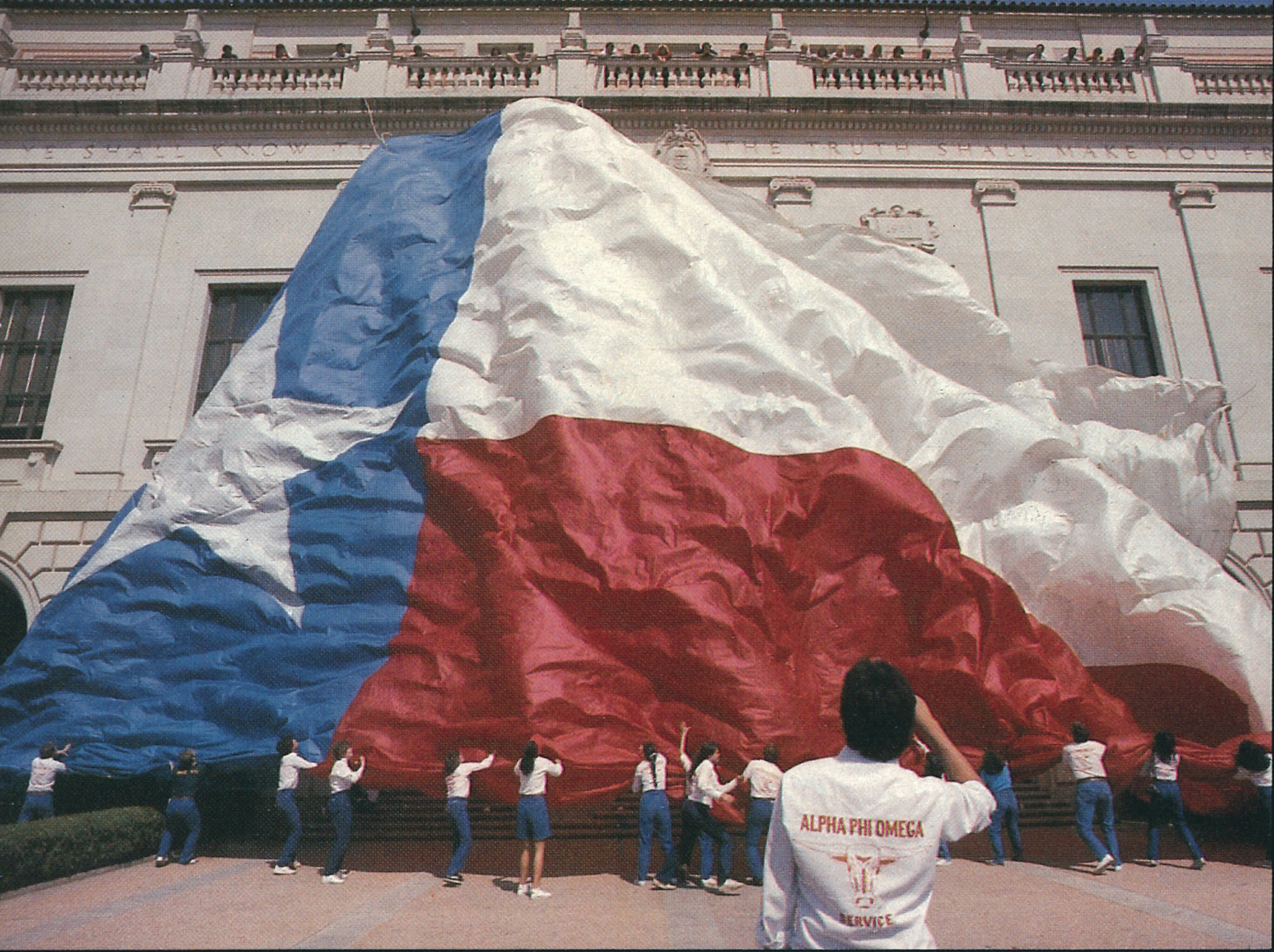The Massive Lone Star Flag Unfurled Before UT Football Games is a Tradition That Goes Back Generations

The people who care about flags, that is, the kinds of people who might style themselves with the Latin-inspired term vexillologist (one who studies flags), take them very seriously. Besides concerns over design, heraldic meaning, or ratio, official banners carry many rules. Perhaps you’ve heard of the U.S. flag code, which bans wearing the Star-Spangled Banner as clothing (a provision almost universally ignored), or that it must be hung vertically with the field of blue (the “canton” in vexillological terms) to the left, or that it cannot fly below another flag.
In Texas, of course, we have strong feelings about our state flag, perhaps the most recognizable of its kind. According to flag nerds at the North American Vexillological Association, in fact, the Lone Star flag is the second-best designed state or provincial flag in the U.S. and Canada. For the record, we were edged out of the top spot by our neighbors in New Mexico, whose Zia flag is without a doubt a beauty. But Texas’ flag, when proudly unfurled, also speaks to more than good design.
So, when the Texas Longhorns met Ole Miss in the 1962 Cotton Bowl, a flag was the choice of gift from Mississippi Gov. Ross Barnett to Texas Gov. Price Daniel. This being Texas, of course, the flag was, to put it plainly, larger than average. In fact, it was massive. Barnett’s gift of so-called “Southern hospitality” was over 51-by-90 feet. The flag was transferred to the Longhorn Band, then to the men’s athletic department, before finally finding a home with Texas’ Alpha Rho branch of the national Alpha Phi Omega (APO) fraternity, which arranged with Athletics to “run the flag” before games.

Since its first appearance at the 1962 Thanksgiving game against Texas A&M, the flag—or more accurately, flags—has been a mainstay of Longhorn football games and campus and civic events, including appearing at two national championship games.
Today, the fraternity possesses three extra-large flags, one for parades (streets are often narrower than football fields, after all), a “drop flag” you might recognize from graduation ceremonies, and of course, the giant one that members open and present on the field. The most recent field flag, produced by San Antonio’s Dixie Flag and Banner Company, is a whopping 100-by-150 feet.
It takes practice, too, to properly “run out” the flag without, for example, one side getting caught moving too slow, or to unfurl it in the spinning “cyclone” maneuver, which resembles a twister, or perhaps a butterfly bursting from its chrysalis. Either way, the members of Texas APO have been folding, unfolding, marching with, and toting the flags for decades. The flags even have their own trailers for transport, like Bevo himself.
“APO’s flag is great because Texas is great,” says Robyn Lee, APO co-president (with Lucas Best). “We have had the honor of showing the world’s largest Texas flag at UT football games, brought it everywhere from the Rose Bowl to ESPN College Gameday. We do all of this out of pride in our state and our school.”
A lot of work for a piece of cloth? Perhaps. But when it’s the flag of Texas, people seem willing to do the work. Perhaps it’s a flag that’s not as balanced as that of New Mexico, or as garish as Maryland’s strange patchwork, but for Texans, and for their flagship university, it’s a symbol with generations of meaning.
After all, what’s the purpose of a flag, or a single bright star, if not to exist as an object to rally around?
Credits: Cactus yearbook





